Troubleshoot Nikon L320 Flash Continues to Flash Red
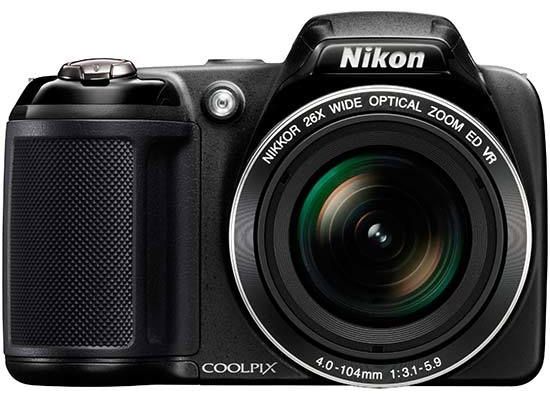
Introduction
The Nikon Coolpix L320 is an easy to use long zoom compact camera. Shaped like a compact DSLR, the camera sports a large 26x optical zoom, 16 megapixel CCD sensor, 3 inch LCD screen, EXPEED C2 processor and takes AA batteries. Coupled with the wireless transfer via Eye-Fi memory cards and the L320 pans out to be a camera for the traveller or keen walker. Priced at around £190, the L320 is available in black.
Ease of Use
For those of you interested in the shape, feel and flexibility of a DSLR or large zoom prosumer camera, you'll be pleased to know that if you don't have the funds available for an expensive model, the Nikon Coolpix L320 is a budget version of other models in the "L" range. It's a smaller brother of the L820 but is pretty much a clone when it comes to the exterior. The L320 has a smaller zoom, reaching to a maximum 26x optical. That still offers you an ultra-wide 22.5mm before zooming out to a nail biting 585mm. Great for if you're walking out in the countryside and there's an interesting natural event that needs a picture, but it's too far away. The zoom is operated via the zoom switch found wrapped around the shutter release on the corner of the grip. Behind this on the main top plate is a small power button. It's sunken into the body so as not to get caught by accident in the heat of the moment.
The idea behind the design of the large grip is to make it easier to hold and to shoot one handed. The weight of the lens is nicely counter-balances the batteries so that the camera is balanced. All the main controls have been placed on the back of the camera and are easily accessible by the thumb that will naturally rest there. The video record button sits on the shoulder and this can be used regardless of whether you're taking pictures or not. In fact, the video mode has been removed from the camera because the video button made it redundant.
Should you want to choose a mode to take pictures in, this is done by pressing the green camera button on the back of the Nikon Coolpix L320. A simple menu will come onto the screen and it allows you to choose from four shooting modes: Easy auto, Scenes, Smart portrait and Auto. The Easy auto mode is – essentially – an automated version of Auto mode. It takes all the decision making out of your hands while still ensuring the correct scene is selected. It does this by analysing the scene as you start to use the camera. It then selects the appropriate mode for the scene it's viewing. For example, it it locates a face, it'll assume you're taking a portrait. It will automatically switch into portrait mode, enable face detection and the flash (if it's in the up position).
The Scenes will allow you to take control of the situation you're in and choose the Scene you want to shoot in. There are 18 to choose from ranging from the typical landscape, portrait and sport modes to more niche options such as museum, panorama and backlit subject. Smart portrait mode utilises every mode and feature of the camera to ensure you get the best portraits such as face detection, blink detection, skin softening and red-eye fix. The final option is the general everyday mode to shoot in. It's useful if you don't want the camera to mess about or require something more routine.
The battery compartment is located on the bottom of the Nikon Coolpix L320 and blessedly has a locking switch. AA batteries tend to impose a degree of pressure on the battery door and it could spring open at an embarrassing moment if it didn't have the lock. We would have liked to see a metal tripod bush on a camera with such a long zoom lens so that you can select a low ISO in the Main menu and keep the noise down while using the zoom or shooting at night.
The Main menu can be accessed by pressing the Menu button on the back of the camera. There are three tabs on the left which you can access by pressing left on the navigation pad. This will flick through the camera, video and main Set-up menus. The Shoot menu, denoted by a green camera, has only five options to it and they all alter the immediate way the camera takes pictures. For example, you can change the resolution, white-balance or ISO. There's also an option for continuous shooting and various colour options such as Vivid, black & white, sepia and cyanotype.
Start up from cold is around 2.8sec which is slower than average of 2.5sec. However, we have to take our reflexes into consideration. The reason being that the shutter button can't be simply pressed down with the aim of taking a picture once switched on. The camera won't register the button being pressed if it's done before it's finished the start up cycle. Given that we have a reflex response time of around 0.4sec, that would take the camera to around the average speed for a start up time. We managed to get seven pictures in a 10 second time-frame which works out around 0.7fps (frames per second). The first four frames record in around 2.5 seconds, which is 0.6fps, not the 1.2fps that Nikon state on the website. We even tried dropping down to the standard resolution, but got similar results.
Press the Playback button and the most recent picture you took will come up on screen, full screen, for you to review. Basic details of the picture are flashed up on screen for a few seconds before they disappear to just the image. You can zoom in using the zoom switch and check sharpness of focus and you can also move around the picture using the navigation pad. Zooming out lays the pictures out as thumbnails for you to review multiple ones at once. In the Playback menu, you can alter the appearance of pictures using the many editing options available such as D-Lighting control, skin softening, rotation, protect and copy. There's also provision to create a slide-show.
In the box, you'll find some practical accessories for your camera such as a pack of batteries to get you started. The great news about batteries that are provided these days is that they're generally very good. Certainly the Nikon ones are. The pack we had lasted us the entire test and beyond. There's also a neck strap, lens cap and USB lead. You also get some software in the shape of Nikon View NX2. The full manual is also located on the disc, although it doesn't say so. However, given that there's only a Quick Start Guide in booklet form, it's common sense.
Image Quality
All images were taken at full resolution unless otherwise stated. At full resolution on the finest setting (denoted by a star next to the sensor resolution number), file sizes range from 6Mb to 7.7Mb. Dropping to the same resolution but with a lower compression rating, the file sizes will roughly halve in size. This will free up space on your memory card while retaining the same amount of pixels being used, but if you're taking images in fine detail, they will look more smudgy.
Noise
The ISO range on the Nikon Coolpix L320 starts at ISO 80 and finishes at ISO 1600. That's a pretty low end setting for today's cameras, though not unwelcome. It's no secret that with high resolution, comes high noise and in the past, Nikon compacts have been suffering. So to see them capping the sensitivity is a nice move.
At ISO 80, things start off well with sharp images and nice colours. There's no traces of noise in dark areas even when viewed at 100% magnification. ISO 100 is only a third of a stop difference in exposure, so it's no surprise that there's no change in noise. It's worth noting that if you shoot at ISO 80 all the time, should you get a shot where the exposure is struggling a little, knocking it up to ISO 100 won't make a difference to the overall image, but makes the sensor more responsive to light.
Sadly at ISO 200, we detected a slight merging of colours, which suggests that noise reduction software has started to work. It won't do that if there's no noise to work on. However, it does a good job at keeping it at bay. By ISO 400, we can start to see the noise come through while viewing at full magnification. For the record, viewing at normal distance gives a pretty decent picture. Close up, blacks are starting to turn green and sharp edges start to lose their crispness.
Blobs of colour noise appear on the image at ISO 800 as the noise reduction software fails to contain the amount of noise present on the photograph. The final setting has a last ditch attempt at sharpening the image and making it decent. In all fairness, it doesn't do that bad a job at it. There's a lack of primary colour in the picture, edges are blurry and colour noise is rife throughout, but we have to admit that we've seen worse at ISO 1600.
| ISO 80 (100% Crop) | ISO 100 (100% Crop) |
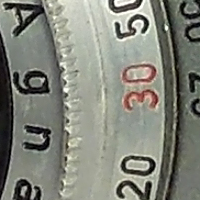 | 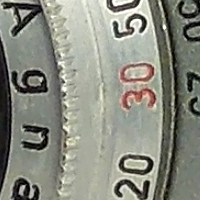 |
| ISO 200 (100% Crop) | ISO 400 (100% Crop) |
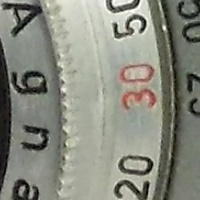 | 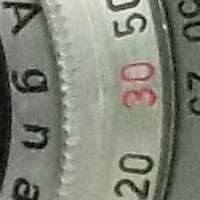 |
| ISO 800 (100% Crop) | ISO 1600 (100% Crop) |
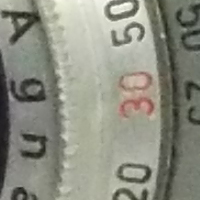 | 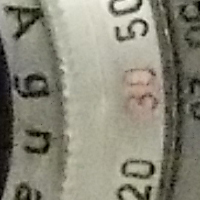 |
Focal Range
The Nikon Coolpix L320 has a 26x optical zoom. On the camera, that's a 4mm – 104mm zoom range, but we generally use 35mm equivalent which is 22.5 – 585mm. That's a large range and we're surprised at just how wide it goes. The great news is that there's minimal barrel distortion at the wide-angle setting but the sharpness drops off badly quite near the centre of the frame.
| 25mm | 525mm |
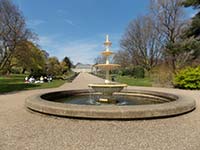 |  |
Sharpening
Typically, Nikon compacts haven't benefited from adjusting the sharpening in an editing suite. However, the noise seems to be under control sufficiently to sharpen the pictures and make it look better than the original.
| Original (100% Crop) | Sharpened (100% Crop) |
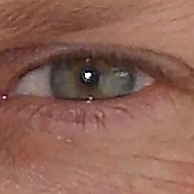 | 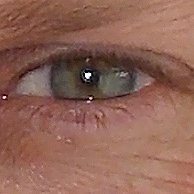 |
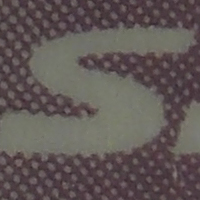 | 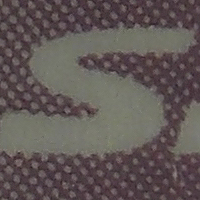 |
File Quality
At full resolution, there are two JPEG quality settings available including Normal and Fine, with the latter being marked with a star in the menu. The L320 does not save images in a Raw format.
| Fine (100% Crop) | Normal (100% Crop) |
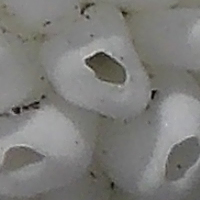 | 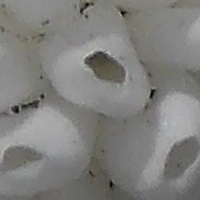 |
Chromatic Aberrations
We struggled to find chromatic aberration on any of the Nikon Coolpix L320's pictures, even with high contrast. When we did find it, it's right at the edges of the frame, so it shouldn't work out as too much of a problem in everyday life.
| Chromatic Aberrations 1 (100% Crop) | Chromatic Aberrations 2 (100% Crop) |
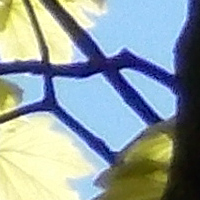 | 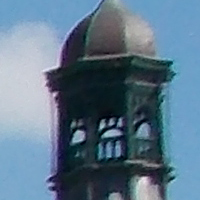 |
| Chromatic Aberrations 3 (100% Crop) | |
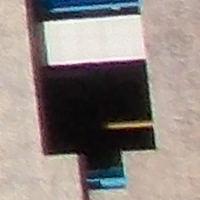 |
Macro
The macro mode of the Nikon Coolpix L320 is supposed to be 1cm, but we couldn't get that close. Well, that's not entirely accurate. We did get that close with the camera confirming focus each time we edged a millimetre closer. However, the pictures were out of focus.
| Macro | Macro (100% Crop) |
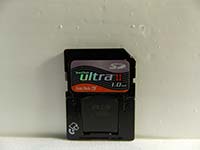 | 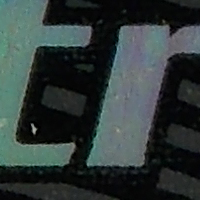 |
Flash
There's slight amounts of vignetting at the corners of the frame when the flash is off. This is only made worse when the flash is fired. However, it goes at full zoom and using flash doesn't create any either. The light is even , spread nicely and gives the effect of ambient light, by reinforcing and stabilising the existing light instead of over powering it.
| Flash Off - Wide Angle (25mm) | Flash On - Wide Angle (25mm) |
 |  |
| Flash Off - Telephoto (525mm) | Flash On - Telephoto (525mm) |
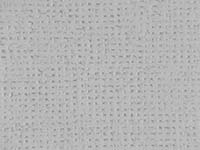 |  |
The Nikon Coolpix L320 has a sufficiently high flash to not suffer from red-eye. There's a red-eye reduction facility in the flash options, but we found it unnecessary. Flash options can only be accessed once the flash is raised by pressing the button on the left of the camera.
| Flash On | Flash On (100% Crop) |
 | 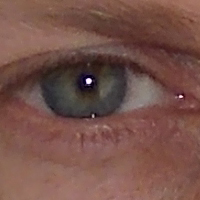 |
| Red Eye Reduction | Red Eye Reduction (100% Crop) |
 | 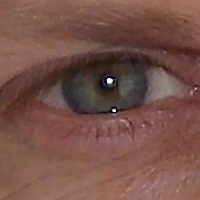 |
Night
We really struggled with the night tests shots. The Nikon Coolpix L320 had a lot of trouble finding a focus lock. More accurately, the camera would say it was focused, but actually wasn't. We discovered that it was down to the amount of light coming in through the lens. The camera simply couldn't see enough contrast to get a lock. So, we shot a test at dusk to see if that helped and we managed to get the shot. The only downside is that the Night auto shot has balanced the exposure out so much that it looks like the middle of the day. The Scene mode shot is a more accurate portrayal of the type of light that was actually there, but because of the higher ISO to enable a fast enough shutter speed, it's riddled with noise. Kudos to the Night auto mode for doing what it's programmed to do, though. The noise is lower because we managed to use a lower ISO and slower shutter speed to let in more light.
| Night Auto | Night Auto (100% Crop) |
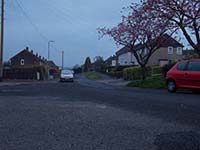 | 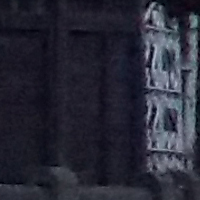 |
| Night Auto | Night Auto (100% Crop) |
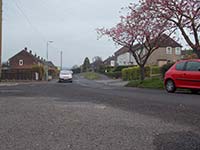 |  |
Sample Images
This is a selection of sample images from the Nikon Coolpix L320 camera, which were all taken using the 16 megapixel Fine JPEG setting. The thumbnails below link to the full-sized versions, which have not been altered in any way.
Sample Movie & Video
This is a sample movie at the highest quality setting of 1280x720 pixels at 30 frames per second. Please note that this 46 second movie is 56.3Mb in size.
Product Images
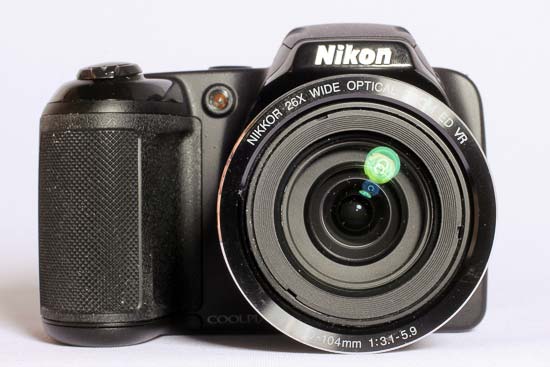 |
| Front of the Nikon Coolpix L320 |
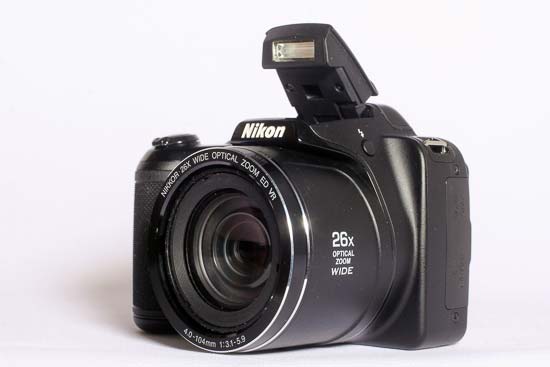 |
| Pop-up Flash |
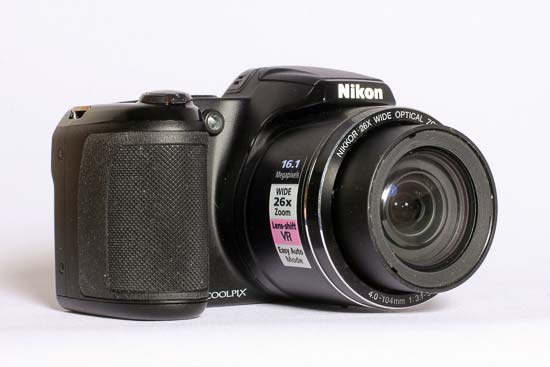 |
| Side of the Nikon Coolpix L320 |
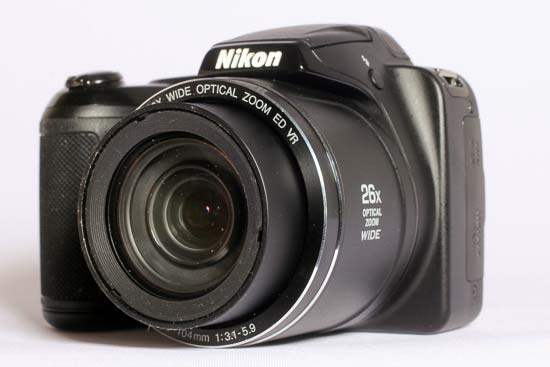 |
| Side of the Nikon Coolpix L320 |
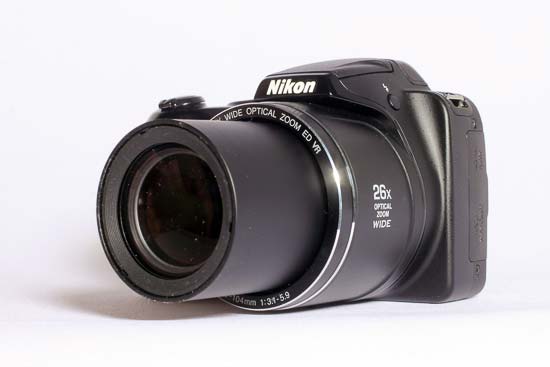 |
| Side of the Nikon Coolpix L320 |
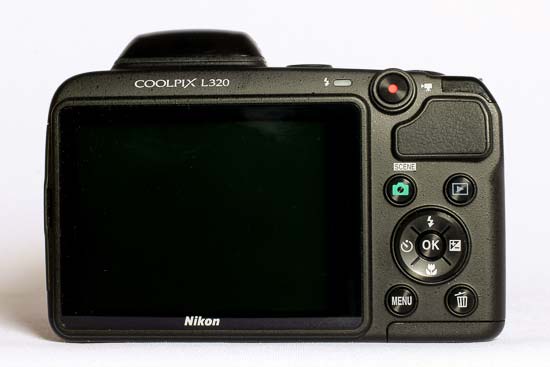 |
| Rear of the Nikon Coolpix L320 |
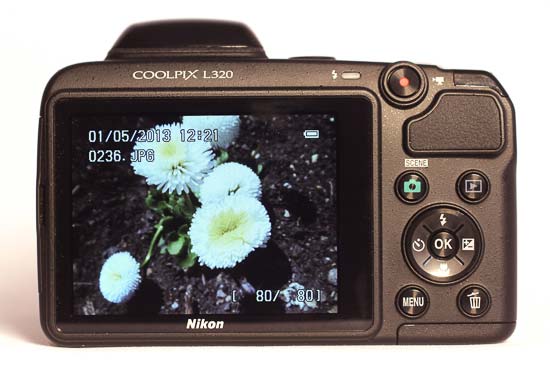 |
| Rear of the Nikon Coolpix L320 / Image Displayed |
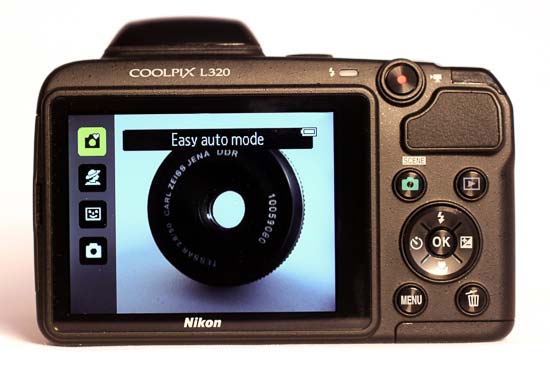 |
| Rear of the Nikon Coolpix L320 / Shooting Mode Menu |
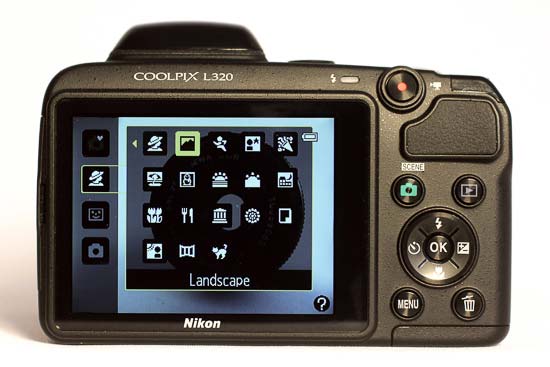 |
| Rear of the Nikon Coolpix L320 / Scene Mode Mode |
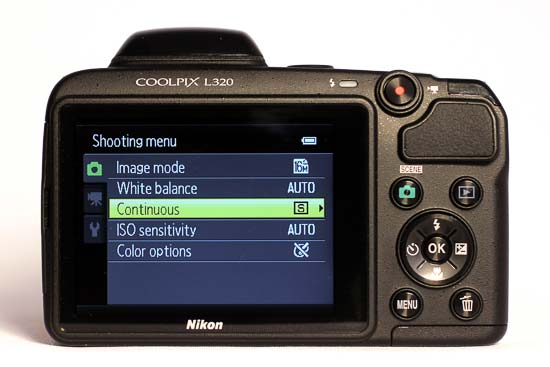 |
| Rear of the Nikon Coolpix L320 / Main Menu |
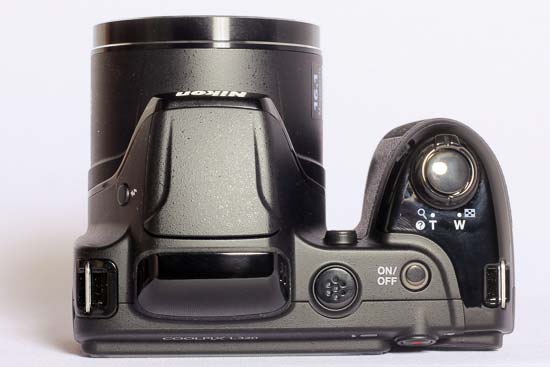 |
| Top of the Nikon Coolpix L320 |
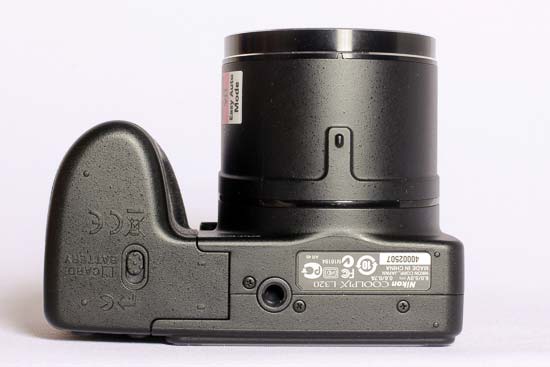 |
| Bottom of the Nikon Coolpix L320 |
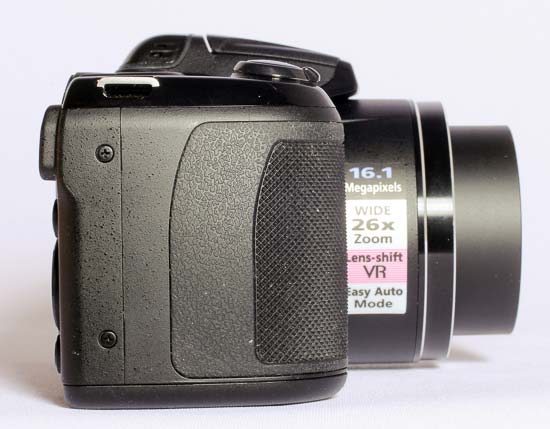 |
| Side of the Nikon Coolpix L320 |
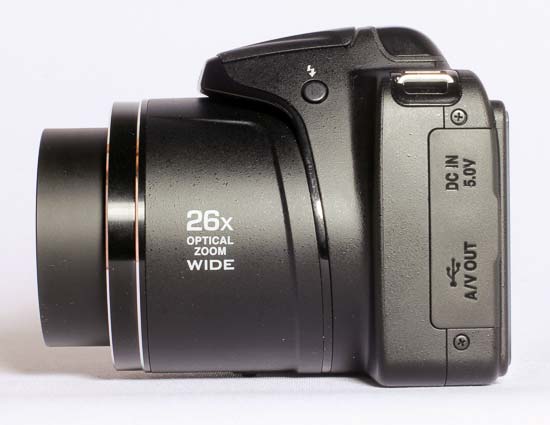 |
| Side of the Nikon Coolpix L320 |
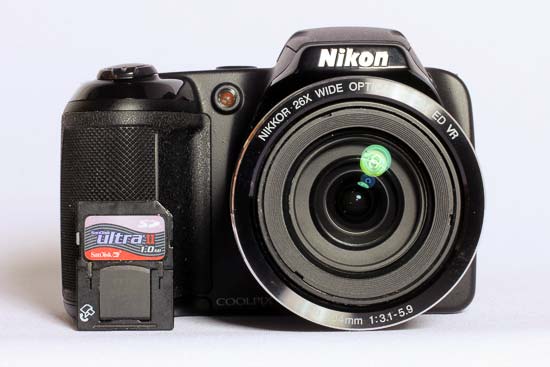 |
| Front of the Nikon Coolpix L320 |
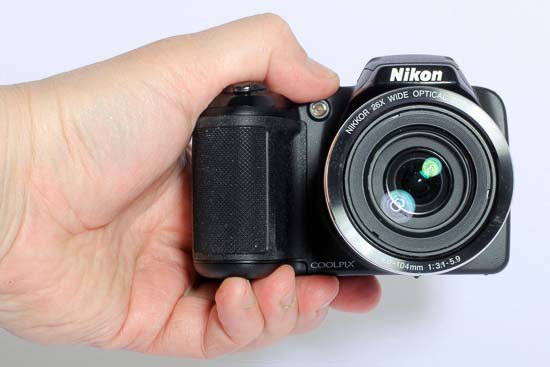 |
| Front of the Nikon Coolpix L320 |
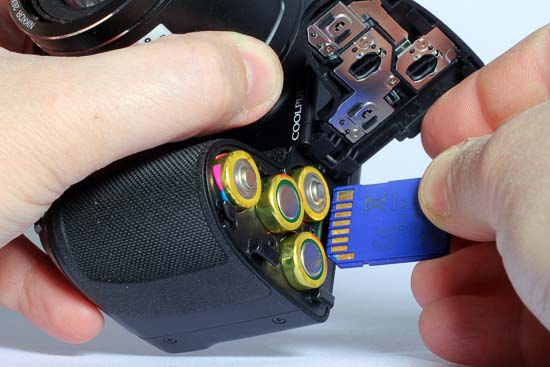 |
| Mewmory Card Slot |
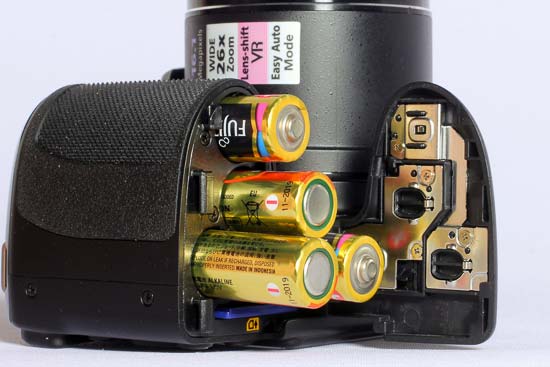 |
| Battery Compartment |
Conclusion
The great thing about the new range of Nikon digital compacts is that they seem to have had an overhaul on the sensor. Image quality is great when you compare it to previous models in the range. The L series are generally the easy-to-use cameras that have the lower build quality and cost effective internal workings in order to keep the cost down. It works fine because the people buying the camera aren't that bothered about a high build quality or whether the sensor has a high dynamic range. They want a camera that isn't going to complicate things.
So the good news is that the Nikon Coolpix L320 pretty much does both. It's not a perfect model, but the image quality is much improved from previous cameras. Noise is dealt with a lot better now and we think that's actually down to a better quality sensor over better noise reduction. The simple fact being that there's no smudging that's consistent with noise reduction software.
The lens quality is also a big boon to the L320. We had difficulty finding aberrations and distortions on the pictures we took. Other areas of the camera's build are pretty good too. It has a similar build quality to the L820 – a higher model – which suggests that Nikon are investing more in the lower end of the market. That's great news, because it's been looking as though they're falling in quality.
We had a great time using the Nikon Coolpix L320 during the test. The screen makes the pictures look great on the back which doesn't necessarily mean that they're going to look good at home, but they do from the L320. If you're a travelling photographer that needs a high zoom all-rounder, but you don't have the money to get a high spec model, then the L320 should suit your needs perfectly.
| Ratings (out of 5) | |
|---|---|
| Design | 4 |
| Features | 4 |
| Ease-of-use | 4.5 |
| Image quality | 4 |
| Value for money | 4 |
Review Roundup
Reviews of the Nikon Coolpix L320 from around the web.
The Nikon Coolpix L320 was announced in March 2013 and is a superzoom compact camera with 26x optical zoom and a 16.1 megapixel sensor, updating the popular value zoom, the L310. It is available for £175.00.
Read the full review »
Specifications
| Product name | COOLPIX L320 |
| Type | Compact digital camera |
| Number of effective pixels | 16.1 million |
| Image sensor | 1/2.3-in. type CCD; approx. 16.44 million total pixels |
| Lens | NIKKOR lens with 26x optical zoom |
| Focal length | 4.0-104.0 mm (angle of view equivalent to that of 22.5-585 mm lens in 35mm [135] format) |
| f/-number | f/3.1-5.9 |
| Lens construction | 12 elements in 9 groups (1 ED lens element) |
| Digital zoom magnification | Up to 4x (angle of view equivalent to that of approx. 2340 mm lens in 35mm [135] format) |
| Vibration reduction | Lens shift |
| Motion blur reduction | Motion detection (still pictures) |
| Autofocus (AF) | Contrast-detect AF |
| Focus range | [W]: Approx. 50 cm (1 ft 8 in.) to infinity, [T]: Approx. 1.5 m (5 ft) to infinity; Macro mode: Approx. 1 cm (0.4 in.) (when zoom is set to middle position) to infinity (All distances measured from center of front surface of lens) |
| Focus-area selection | Center, face detection |
| Monitor | 7.5 cm (3-in.), approx. 230k-dot, TFT LCD with anti-reflection coating and 5-level brightness adjustment |
| Frame coverage (shooting mode) | Approx. 95% horizontal and 95% vertical (compared to actual picture) |
| Frame coverage (playback mode) | Approx. 100% horizontal and 100% vertical (compared to actual picture) |
| Storage media | Internal memory (approx. 49 MB); SD/SDHC/SDXC memory card |
| File system | DCF, Exif 2.3, and DPOF compliant |
| File formats | Still pictures: JPEG; Movies: MOV (Video: H.264/MPEG-4 AVC, Audio: LPCM monaural) |
| Image size (pixels) | 16M (High) [4608 x 3456(fine)]; 16M [4608 x 3456]; 8M [3264 x 2448]; 4M [2272 x 1704]; 2M [1600 x 1200]; VGA [640 x 480]; 16:9 [4608 x 2592] |
| Shooting Modes | Easy auto, Scene (Portrait, Landscape, Sports, Night portrait, Party/indoor, Beach, Snow, Sunset, Dusk/dawn, Night landscape, Close-up, Food, Museum, Fireworks show, Black and white copy, Backlighting, Panorama assist, Pet portrait), Smart portrait, Auto |
| Continuous Shooting | Single (default setting), Continuous (about four images are captured continuously at a rate of about 1.2 fps), BSS (Best Shot Selector), Multi-shot 16 |
| Movie | HD 720p (default setting): 1280 x 720/16:9/approx. 30 fps, VGA: 640 x 480/4:3/approx. 30 fps |
| ISO sensitivity (Standard output sensitivity) | ISO 80-1600 |
| Exposure metering mode | Matrix, center-weighted (digital zoom less than 2x), spot (digital zoom 2x or more) |
| Exposure control | Programmed auto exposure and exposure compensation (-2.0 - +2.0 EV in steps of 1/3 EV) |
| Shutter | Mechanical and charge-coupled electronic shutter |
| Shutter speed | 1/1500-1 s; 4 s (Fireworks show scene mode) |
| Aperture | Electronically-controlled ND filter (-3.3 AV) selection |
| Aperture range | 2 steps (f/3.1 and f/9.9 [W]) |
| Self-timer | Approx. 10 s |
| Flash range (approx.) (ISO sensitivity: Auto) | [W]: 0.5 - 5.0 m (1 ft 8 in. - 16 ft); [T]: 1.5 - 2.5 m (5 ft - 8 ft 2 in.) |
| Flash control | TTL auto flash with monitor preflashes |
| Interface | Hi-Speed USB |
| Data Transfer Protocol | MTP, PTP |
| Video output | Can be selected from NTSC and PAL |
| I/O terminal | Audio/video (A/V) output; digital I/O (USB); DC input connector |
| Supported languages | Arabic, Chinese (Simplified and Traditional), Czech, Danish, Dutch, English, Finnish, French, German, Greek, Hindi, Hungarian, Indonesian, Italian, Japanese, Korean, Norwegian, Polish, Portuguese (European and Brazilian), Romanian, Russian, Spanish, Swedish, Thai, Turkish, Ukrainian, Vietnamese |
| Power sources | Four LR6/L40 (AA-size) alkaline batteries; Four FR6/L91 (AA-size) lithium batteries; Four EN-MH2 rechargeable Ni-MH batteries (available separately); AC Adapter EH-67 (available separately) |
| Battery life¹ | Still pictures: Approx. 310 shots when using alkaline batteries, Approx. 810 shots when using lithium batteries, Approx. 450 shots when using EN-MH2 batteries; Movie recording (actual battery life for recording)²: Approx. 1 h 20 min when using alkaline batteries, Approx. 3 h 40 min when using lithium batteries, Approx. 2 h 40 min when using EN-MH2 batteries |
| Tripod socket | 1/4 (ISO 1222) |
| Dimensions (W x H x D) | Approx. 111.1 x 76.3 x 83.1 mm (4.4 x 3.1 x 3.3 in.) (excluding projections) |
| Weight | Approx. 430 g (15.2 oz) (including batteries and a memory card) |
| Temperature | 0°C-40°C (32°F-104°F) |
| Humidity | 85% or less (no condensation) |
| Supplied accessories | Camera Strap, LR6/L40 (AA-size) alkaline batteries (x4), Lens Cap LC-CP25 (with cord), USB Cable UC-E16, ViewNX 2 CD-ROM, Reference Manual (CD-ROM) |
| Optional accessories | AC Adapter EH-67, Audio Video Cable EG-CP14, Hand Strap AH-CP1, Battery Charger MH-73 (includes four EN-MH2 rechargeable Ni-MH batteries), Rechargeable Ni-MH batteries EN-MH2-B4 (set of four EN-MH2 batteries) |
Your Comments
- Introduction
- Ease of Use
- Image Quality
- Sample Images
- Product Images
- Conclusion
- Review Roundup
- Specifications
christensenaladvid.blogspot.com
Source: https://www.photographyblog.com/reviews/nikon_coolpix_l320_review
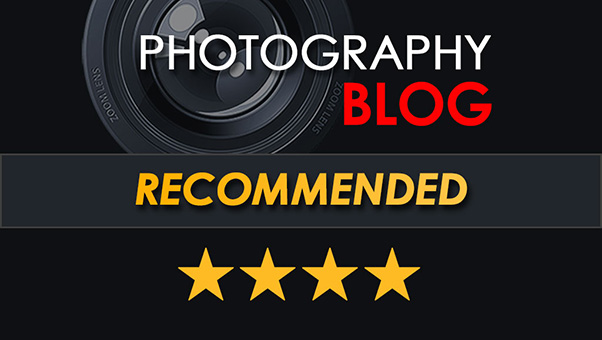
0 Response to "Troubleshoot Nikon L320 Flash Continues to Flash Red"
Post a Comment